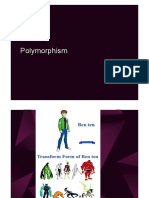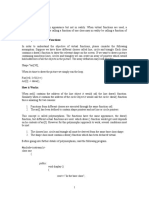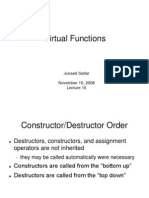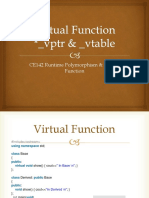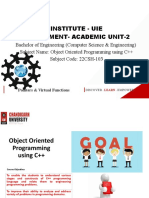0% found this document useful (0 votes)
54 views13 pagesVirtual Function & Abstract Classes
Virtual functions allow for dynamic polymorphism by allowing derived classes to override base class functions. Abstract classes contain at least one pure virtual function and cannot be instantiated, requiring derived classes to provide implementations for the pure virtual functions. Concrete derived classes must override all pure virtual functions of the abstract base class to not be abstract themselves.
Uploaded by
Muhammad JaleelCopyright
© © All Rights Reserved
We take content rights seriously. If you suspect this is your content, claim it here.
Available Formats
Download as PPT, PDF, TXT or read online on Scribd
0% found this document useful (0 votes)
54 views13 pagesVirtual Function & Abstract Classes
Virtual functions allow for dynamic polymorphism by allowing derived classes to override base class functions. Abstract classes contain at least one pure virtual function and cannot be instantiated, requiring derived classes to provide implementations for the pure virtual functions. Concrete derived classes must override all pure virtual functions of the abstract base class to not be abstract themselves.
Uploaded by
Muhammad JaleelCopyright
© © All Rights Reserved
We take content rights seriously. If you suspect this is your content, claim it here.
Available Formats
Download as PPT, PDF, TXT or read online on Scribd
/ 13








